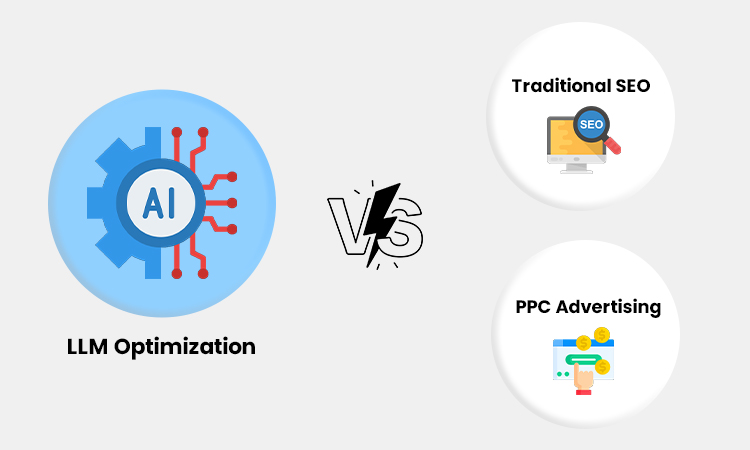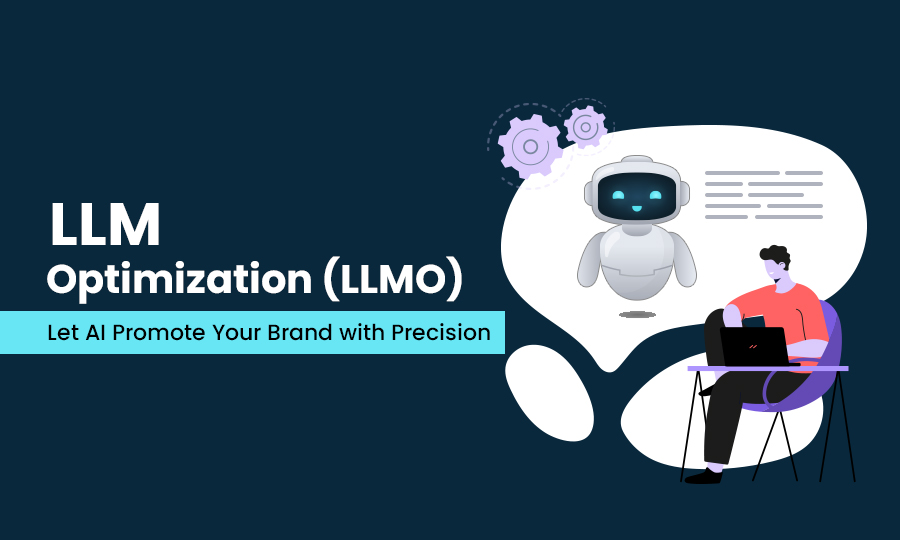Overview
Search Engine Optimization (SEO), which makes sure that companies and creators are visible on sites like Google, Bing, and Yahoo, has been the mainstay of digital marketing for more than 20 years. However, the terrain is changing quickly. Users are no longer merely searching thanks to the emergence of Large Language Models (LLMs) like OpenAI's GPT series, Google Gemini, Anthropic's Claude, and Meta's LLaMA. Instead, they are conversing, posing natural language queries, and anticipating responses that are human-like.
Large Language Model Optimization (LLMO) is a new field that emerged as a result of this change. Like SEO, LLMO concentrates on content optimization to make sure it appears when users engage with chatbots and AI-driven assistants. To put it another way, LLMO is about being discoverable in AI-powered conversations, whereas SEO is about ranking on search engines.
Large Language Model Optimization (LLMO): What is it?
The process of organizing, modifying, and improving digital content so that Large Language Models can efficiently comprehend, retrieve, and suggest it is known as LLMO.
Businesses are now vying to be the response that an AI chatbot cites or summarizes in response to user queries, rather than vying for a position on Google's first page.
For instance:
The model may pull information from several sources when a user asks ChatGPT, "What are the best CRM tools for startups?" Your product is more likely to be mentioned in that response if your CRM company has used LLMO tactics to optimize its content.

Why Does LLMO Matter?
AI is replacing traditional search: A growing number of people, especially Gen Z, are skipping search engines and asking AI assistants directly.
Trust factor: If an AI cites your business or brand, it creates instant credibility in the user's eyes.
Future-proofing: Just as companies had to adapt to mobile-first indexing or voice search, adapting to AI-driven discovery ensures long-term visibility.
Higher engagement: Users tend to trust concise, AI-curated responses over sifting through endless links.
In short, LLMO is about staying relevant in the age of AI-driven knowledge discovery.
Important LLMO Principles
1. Content that is Context-Rich and Structured
Semantically rich, well-structured content is ideal for LLMs. Models can process and retrieve articles more easily when they have clear headings, bullet points, and frequently asked questions.
• For structured data, use schema markup.
• In your content, give precise definitions, illustrations, and use cases.
• Since natural-sounding text is given priority by AI models, write in a conversational style.
2. Optimization Based on Entities
LLMs concentrate on entities and relationships as opposed to traditional SEO, which uses a lot of keywords. For example, when writing about "blockchain," be sure to include explanations of related terms like "smart contracts," "cryptocurrency," and "decentralized finance."
3. Reliable Citations and Sources
Reputable, authoritative sources are valued by AI models. Original research, professional judgments, and citations to reputable publications increase the likelihood that content will be found.
4. Conversational queries and frequently asked questions
Including FAQ sections in your content guarantees that answers can be directly lifted because users frequently ask LLMs questions. For example:
"What is LLMO?"
"What makes LLMO crucial for companies?"
5. Optimization through Multimodality
Optimizing across formats will be essential as LLMs develop into multimodal systems that can handle text, images, video, and audio. Your content becomes more AI-friendly when you include descriptive metadata, video transcriptions, and alt-text for images.
Techniques for LLMO Implementation
1. Write for People, Optimize for Computers
Always put the reader's benefit and clarity first, but remember that LLMs and humans have different ways of understanding the same information. Steer clear of walls of text filled with jargon and instead focus on delivering information in an organized and understandable manner.
2. Make Use of Topic Clusters
Create topic clusters centered around major themes rather than discrete, keyword-rich pages. This makes it easier for LLMs to comprehend the scope and depth of your subject-matter expertise.
3. Preserve Data Correctness
Outdated or inaccurate data is penalized by AI models. To remain current, update statistics, trends, and references on a regular basis.
4. Make Metadata Better for AI Retrieval
Metadata tags and summaries affect how AI systems understand and condense your content, much like meta descriptions affect SEO.
5. Try Prompt Engineering Out
Examine the appearance of your content or brand when interacting with various LLMs. Ask ChatGPT, for instance, "What are the best branding agencies in Delhi?" and check to see if your agency arrives. This aids in locating areas for optimization.
LLMO's Challenges
1. Opaque Retrieval Models: LLMs don't always disclose how or why they select sources, in contrast to Google, which offers analytics and ranking information.
2. Continuous Evolution: AI models may interpret content differently as a result of frequent updates.
3. Bias and Hallucinations: If the model produces inaccurate context, even optimized content could be misrepresented.
4. Lack of Standardization: Since LLMO is still a young field, there are currently no widely recognized standards.
LLMO's Future
LLMO will develop into a fundamental digital marketing tactic as AI tools become more widely used. Soon, we might witness:
• AI Visibility Platforms: Instruments that monitor the frequency with which LLMs cite your work.
• Generative Ads: Brands can make sure their products are suggested in AI-driven responses with generative ads, which are paid campaigns.
• Personalized AI Search: LLMs customize responses according to user preferences, location, and history, further contextualizing LLMO.
• Integration with Generative Engine Optimization (GEO): LLMO will work in tandem with GEO, which optimizes content for search engines powered by artificial intelligence.
Conclusion
The next significant change in digital visibility is Large Language Model Optimization (LLMO). Similar to how SEO transformed online marketing in the early 2000s, LLMO is poised to transform how companies, artists, and individuals succeed in an AI-driven world.
By producing structured, authoritative, and conversational content, brands that adjust early will not only remain visible but also acquire a competitive advantage in the future marketplace.
LLMO is essentially about making sure your voice is included in the AI dialogue that will shape the internet of the future, not just about machines finding your content.




